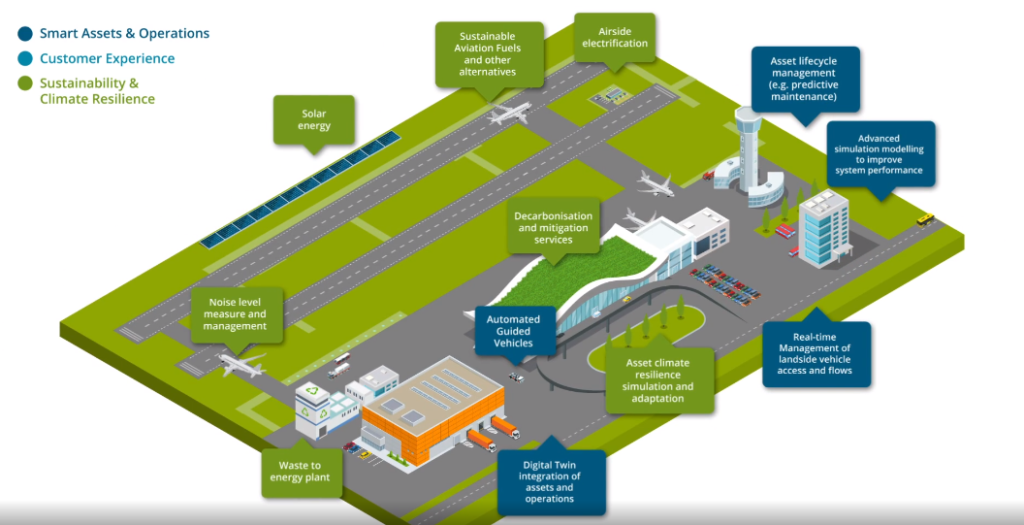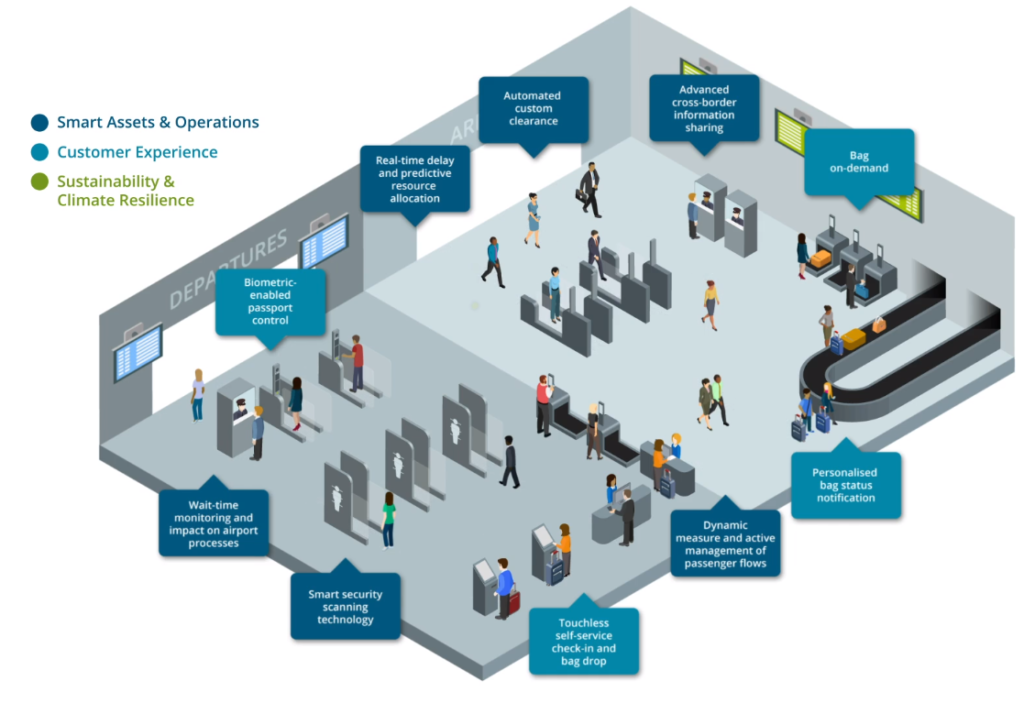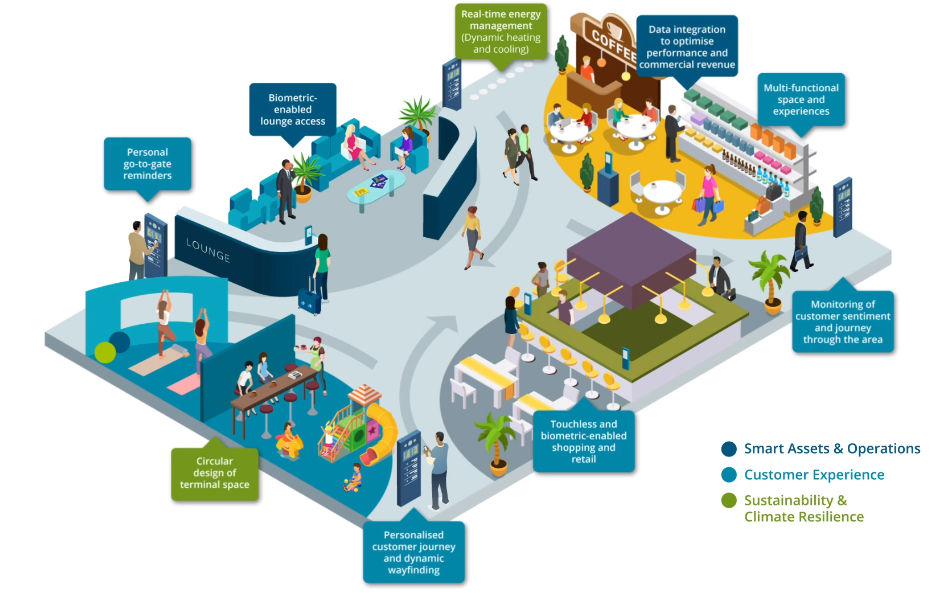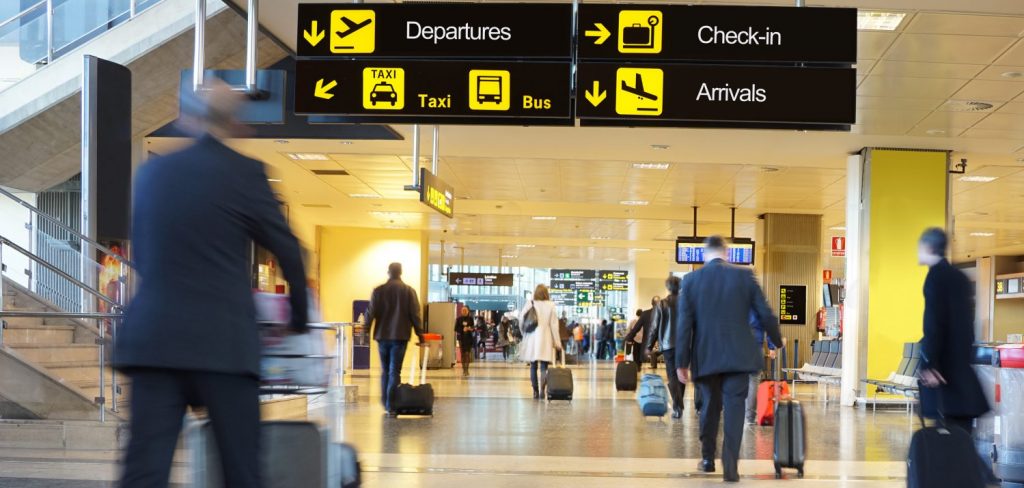Smart aviation and smart airports are hot topics in our sector – but it can be difficult to separate ‘the possible’ (can do) from ‘the valuable’ (should do).
The challenge with any technology is staying focused on your purpose, ensuring there are clear strategic aims behind any investment. Today’s airport strategy is about adopting digital technologies that optimize existing assets, drive operational efficiency and enhance commercial performance.
This is not about reinventing how airports work. It combines traditional ways of working with smart problem-solving to address post-pandemic challenges and green recovery, and ‘build back better’.
Designing your strategy
Technology brings exciting opportunities to both airport operations and the passenger experience. In prioritizing investments, the first task is to explore an innovation strategy, outlining a clear vision and objectives.
Then, moving from strategy to execution, airports should map desired improvements to their capabilities and explore new business models or partnerships to unlock new types of value. There are three central goals in adopting airport innovations:
- Applying data-driven digital tools to improve and optimize existing operations. Enhancing how your infrastructure is used drives efficiency, reduces operational costs, boosts revenues and improves investment planning.
- Meeting customer expectations and delivering a great airport experience is an ever-growing challenge. The online world has put the consumer in control, and people expect the same levels of customer care and personalization everywhere.
- Driving sustainability, responsibility and climate resilience – achieving environmental targets and committing to decarbonization. By connecting with local communities and regional authorities we can improve the living environment, mobility, employment and business continuity.
 What are the main ways smart innovations can add value?
What are the main ways smart innovations can add value?
Some of the most valuable ways to invest in your airport terminal include:
Smart operations – from digital twins and forecasting tools to smart turnaround and automated runway condition monitoring, digital tools speed up and streamline operations and extend asset lifetimes.
Data management – capturing and processing complex data and presenting it to multiple airport users in a clear, insightful way. Real-time information is crucial for effective and proactive decision-making and breaking down traditional ‘airport versus airlines’ data silos.
Flow monitoring is already used to good advantage in airports around the world. The next step is to integrate detection technologies with AI solutions for real-time response. The moment cameras detect a slowdown or bottleneck, pre-programmed mitigations can be triggered; for example, opening new security screening lanes or redeploying staff.
Touchless processing has rapidly gained traction post-Covid. Mobile-enabled technologies such as touchless kiosks are safer than interacting with staff or traditional self-service touchpoints. Biometrically enabling this technology delivers faster processing and real-time data to improve on-time performance, increase throughputs and improve the customer experience.
Baggage tracking, including smart tagging systems, on-demand reclaim and remote baggage drop technology will provide increased efficiency for handlers and customers. Advancements in digital tracking will streamline the end-to-end baggage journey.
Bespoke customer services via engaging mobile apps will simplify and augment the airport experience. Customers benefit from interactive wayfinding, personalized commercial offers, boarding information and more.
Sustainability and resilience initiatives such as dynamic energy management and climate resilience quick scans will decarbonize airport infrastructure, ensure business continuity, reduce costs and deliver an important point of difference.
 There are clear advantages to these new directions, but harnessing the opportunity is complex and demanding. Devising the right strategy involves exploring the needs of all stakeholders and identifying actions to meet them.
There are clear advantages to these new directions, but harnessing the opportunity is complex and demanding. Devising the right strategy involves exploring the needs of all stakeholders and identifying actions to meet them.
Turning a strategy into tangible value requires dedicated leadership, plus an experienced, collaborative team to turn ideas and vision into a detailed, deliverable plan.


